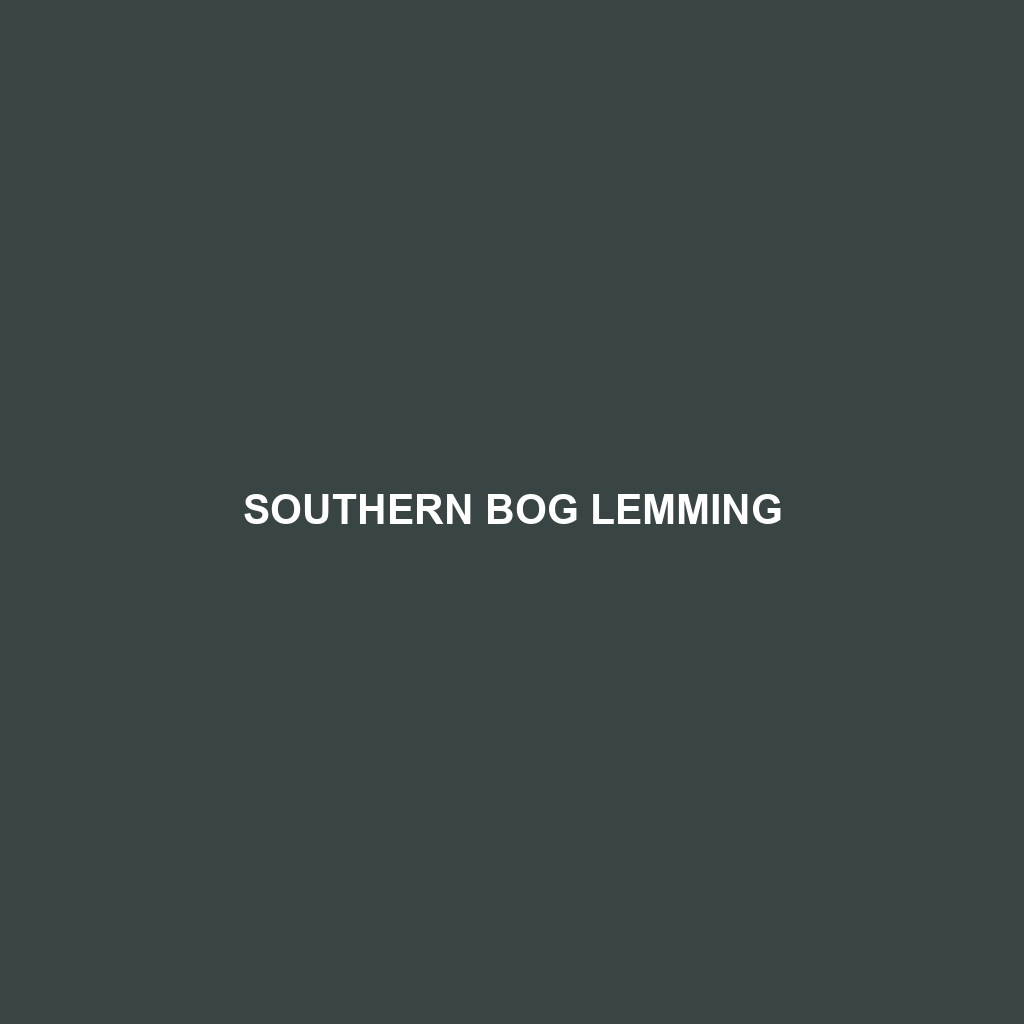Southern Bog Lemming (Scientific Name: Synaptomys cooperi)
Habitat
The Southern Bog Lemming is primarily found in the wetlands and marshy areas of the northeastern United States and parts of Canada. This species thrives in habitats characterized by dense grass and sedge cover, especially in regions with high moisture. They are often located in bogs, marshes, and moist meadows, where their burrowing behavior contributes to the ecosystem’s health.
Physical Characteristics
This small mammal typically measures about 4 to 5 inches in length, with a short, dense fur coat that is generally a rich brown or gray color. The Southern Bog Lemming has a robust, cylindrical body with a blunt snout, small ears, and a short tail. Its small size and fluffy appearance make it easily identifiable among similar species.
Behavior
Southern Bog Lemmings are known for their social behavior, often forming colonies within their burrow systems. Their activities include foraging during twilight hours, which may attract attention from predators. They are also adept at swimming, utilizing nearby water sources to escape threats. These lemmings are mostly terrestrial but may climb low vegetation when necessary.
Diet
The diet of the Southern Bog Lemming consists mainly of herbaceous plant materials, including grasses, sedges, and mosses. They are known to feed on roots and tubers as well, which provide essential nutrients. This herbivorous diet plays a crucial role in nutrient cycling within their wetland habitats.
Reproduction
Breeding typically occurs in spring and early summer, with female Southern Bog Lemmings having the capacity to produce multiple litters per year. Each litter usually consists of 3 to 6 young, which are born blind and hairless. Parental care is critical, and mothers often build nests in dense vegetation to safeguard their offspring until they are mature enough to leave the nest.
Conservation Status
The Southern Bog Lemming is currently classified as vulnerable due to habitat loss from urban development and wetland drainage. Conservation efforts are essential to safeguard their marshy habitats and promote population recovery.
Interesting Facts
One fascinating aspect of the Southern Bog Lemming is its ability to enter a state of torpor during extreme weather conditions. This energy-saving behavior allows them to survive in fluctuating environments. Additionally, they are considered a vital food source for various predators, including owls and foxes.
Role in Ecosystem
As foragers of plant materials, Southern Bog Lemmings play an essential role in their ecosystem by helping to maintain vegetation balance and serve as prey for higher trophic levels. Their burrowing activities aerate the soil, promoting healthier growth for wetland flora and enhancing ecosystem resilience.
